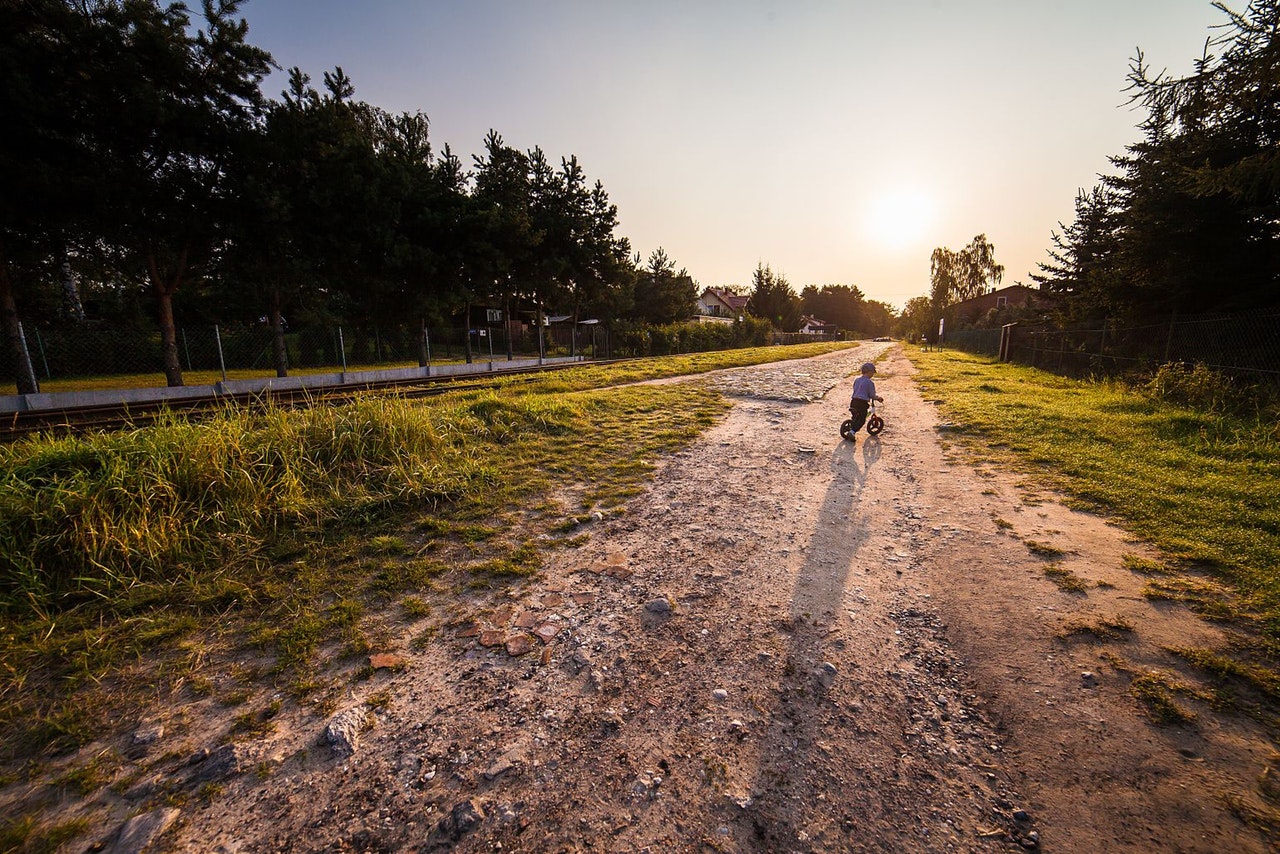Highlights
- In the avg. rural place, kids starting out at the 25th percentile of the national income distribution typically make it to about the 47th, versus the 44th in more urbanized areas. Post This
- Upward mobility is stronger in places with more two-parent families, and two-parent families are more common in rural areas. Post This
- The tie between family structure and upward mobility is extremely strong, and rurality comes along for the ride, w/rural areas tending to have lots of two-parent families. Post This
Over the course of American history, economic activity, population, and wealth have shifted from rural areas to cities. Rural America is famously “left behind.”
So why are kids who grow up in rural areas more upwardly mobile?
That’s one of many questions raised, in part, through the recent work of Raj Chetty and his colleagues, who documented economic mobility across the country by connecting the incomes of young adults in the 2010s with the incomes of their parents decades earlier. They made the results available to other researchers online, county by county and census tract by census tract, which facilitated a lot of follow-up work.
A new study from Dylan Connor and three coauthors provides some answers, and it appears that family structure is key.
“Today, there is quite a strong big-city bias in many quarters of the media and academia, where the assumption is that life in large, dense urban areas is superior to that in smaller and more remote places,” Connor told me via email. “Our research offers a more positive story for rural communities, serving as a reminder of some of the benefits to a rural upbringing.”
The rural advantage in mobility is small but important. In the average place the authors classify as rural,1 kids starting out at the 25th percentile of the national income distribution typically make it to about the 47th, versus the 44th in more urbanized areas. Even among rural areas, the more rural areas have higher mobility.
Where does that effect come from? The explanation that best fits the data is that upward mobility is stronger in places with more two-parent families—something that Chetty’s work itself showed—and two-parent families in turn are more common in rural areas. In statistical models, the relationship between rural areas and upward mobility disappears when controlling for the prevalence of two-parent families. No other variable included in the study has the same power: not racial demographics, not a measure of social capital, and not economic factors. Selective outmigration from rural areas, where the most skilled kids leave to take advantage of the higher wages offered in denser places, also doesn’t seem to be driving it: “migrants are more upwardly mobile than non-migrants on average, but the estimated impact of growing up in a rural location is similar between the two groups.”
This chart nicely illustrates the relationships among a location’s family structure, mobility rates, and rurality. The tie between family structure and upward mobility is extremely strong, and rurality comes along for the ride, with rural areas tending to have lots of two-parent families.

Connor et al. then push deeper into the data to address whether these effects vary, for instance, by sex and race, and by household vs. personal income. They do.
One key dynamic is that kids who grow up with two parents are more likely to get married themselves, which increases household income simply by adding another person’s paycheck to it. When the researchers use personal income in adulthood instead of household income, or simply control for the share of kids from each place who get married by age 32 (around the time their adult incomes are measured), the relationship between two-parent households and mobility falls quite a bit, approximately a third for men and half for women.
Speaking of the two sexes, the use of personal income also reveals a big difference between them: In terms of their own earnings, men have higher mobility in rural areas, but women don’t, possibly because rural women are more likely to scale back their work to take care of kids.
Adding race to the mix, white males seem to gain the most from growing up rural, while rural black and Hispanic females are less upwardly mobile than their urban counterparts. And geographically, rural places in the Great Plains and Pacific Northwest have the largest positive effect on mobility, while rural places in New York, California, and several southern states actually have negative effects.
The study answers a lot of questions, but it leaves plenty more open. Connor and his colleagues rely on Chetty’s data summarizing mobility by census tract, because access to the underlying IRS records is extremely hard to obtain. With that comes a few limitations, such as the way Chetty’s team defined mobility in the course of measuring it: A child’s starting place is defined by the income of the household in which he grew up.
What makes this tricky is that some parents are married, some are not, and some choose to reduce their incomes by staying home with kids. When one explores the outcomes of kids who started at the 25th percentile of family income around the mid-to-late 1990s—about $27,000—one compares some very different situations involving very different types of people. Imagine, for example, a single parent making $27,000, two low-wage workers both earning $13,500, and a couple where one person brings in $27,000 and the other stays home. Despite having the exact same household income, these parents will likely have different education, skills, and personality traits, not to mention very different child-care bills. Arguably, these differences lead to apples-to-oranges comparisons.
It’s hard to say how these dynamics affect the results here. As Connor pointed out when I asked him about it, the biases in my example run in both directions: Both the married couple with a stay-at-home parent and the single parent are arguably “underplaced” relative to the low-wage couple. The latter family needs two incomes to earn what the others bring in with one.
I hope further work is able to show how the picture changes with different conceptions of kids’ “starting place” in the economic distribution.2 But the work of Connor and his coauthors has moved the conversation forward by untangling an important puzzle.
Robert VerBruggen is a fellow at the Manhattan Institute and an IFS research fellow.
1. Where other researchers might look at counties, metro areas, or even states, this paper uses “places” defined by the Census Bureau, which include both incorporated jurisdictions like towns and cities, as well as unincorporated areas. (The Chetty data are available at the census-tract level, which can be combined up to places.) To determine how rural each place is, Connor et al. use a new index that incorporates “typical place-based characteristics like population size and density” along with “spatial characteristics such as proximity to larger towns and cities.” “Urban” and “rural” are separated by a single cutoff on the index.
2. Another potential area is cost of living—kids in rural areas are arguably less disadvantaged than kids in urban areas with the same income—though Chetty showed that to be a minor factor, at least at the level of commuting zones. Basically, most kids end up living where they grew up or somewhere similar, so the cost-of-living adjustment changes their childhood and adult incomes in the same direction, leaving the mobility between the two basically unaffected.










